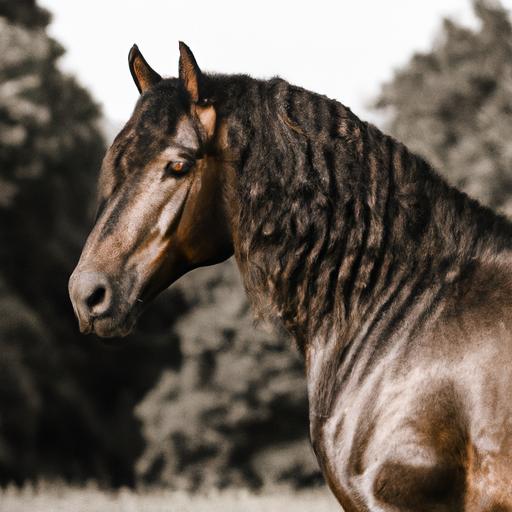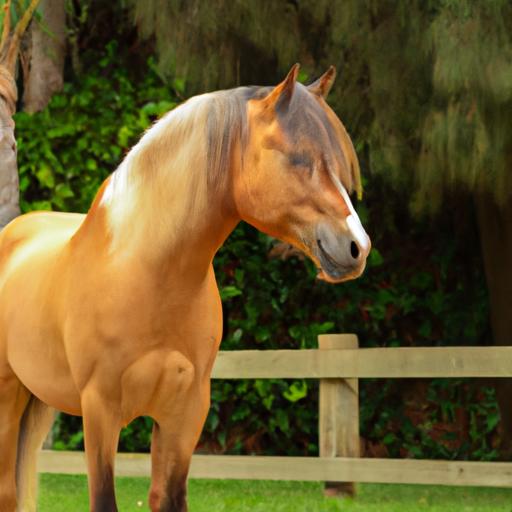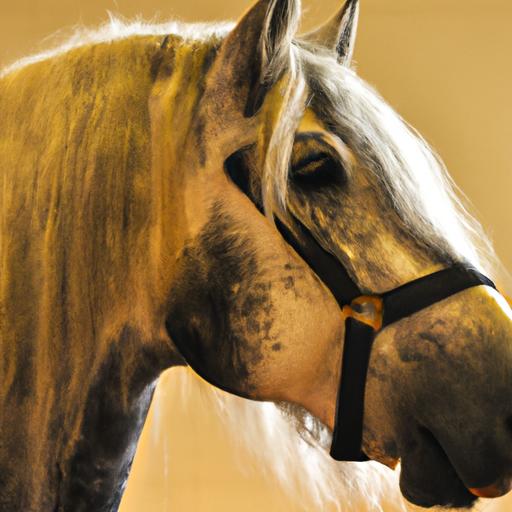Uncover the allure of medieval horse breeds and their impact on history. Explore the origins, distinctive features, and cultural significance.
From knights charging into battle to nobles parading through grand tournaments, medieval horse breeds have left an indelible mark on history. As we embark on a journey through time, let’s delve into the captivating world of these majestic creatures and discover why their significance transcends the ages.
A. Brief History of Medieval Horse Breeds

In the vast tapestry of medieval history, horses were not mere tools but esteemed companions. The roots of medieval horse breeds can be traced back to ancient civilizations, where selective breeding techniques were employed to develop horses with specific traits suited for diverse purposes. These early equestrian pioneers laid the foundation for the magnificent horse breeds that graced the medieval era.
Throughout the Middle Ages, these noble steeds played a pivotal role in various aspects of society. From serving as loyal warhorses, charging fearlessly into battle, to carrying knights adorned in armor, they embodied power, strength, and grace. The importance of medieval horse breeds extended far beyond the battlefield, as they also facilitated transportation, agriculture, and even cultural festivities.
Now that we’ve glimpsed into the historical backdrop, let’s embark on an exploration of the mesmerizing characteristics that set medieval horse breeds apart. Join me as we unravel their physical attributes, unique traits, and the variations that make each breed a work of art.
Stay tuned for Section II, where we dive into the captivating world of medieval horse breed characteristics.
Characteristics of Medieval Horse Breeds

A. Physical Attributes and Appearance
When envisioning medieval horse breeds, images of sleek, powerful, and noble creatures immediately come to mind. These horses possess an unparalleled physical allure that sets them apart from their modern counterparts. With their arched necks, muscular bodies, and expressive eyes, they exude an undeniable aura of magnificence.
Diverse in their appearances, medieval horse breeds exhibit a range of features that reflect their origins and purposes. From the refined elegance of the Arabian horse to the sturdy presence of the Friesian breed, each breed boasts its own distinct beauty. Their coats come in a variety of shades, from the shimmering black of the Friesians to the dappled grays of the Andalusians, adding to their captivating allure.
B. Unique Traits and Abilities
Beyond their physical attributes, medieval horse breeds possess remarkable traits and abilities that further solidify their legendary status. These breeds were selectively bred for specific purposes, honing their skills to perfection. The Arabian horse, for instance, is renowned for its endurance, agility, and intelligence, making it an exceptional choice for long-distance journeys and swift maneuvers on the battlefield.
Similarly, the Friesian breed boasts an innate elegance and a natural inclination for dressage, captivating hearts with their graceful movements and striking presence. Andalusian horses, with their gentle temperaments and remarkable agility, have long been favored for equestrian shows and high-level dressage.
C. Variations in Size and Build
Medieval horse breeds also exhibit variations in size and build, catering to the diverse needs of their age. From the stocky and sturdy Dales Pony, ideal for carrying heavy loads and navigating rough terrains, to the swift and nimble Irish Hobby, favored for its agility in hunting and warfare, each breed has its own unique physique.
These variations in size and build allowed medieval societies to utilize horses for a wide range of purposes, from agricultural work to combat. It is this adaptability that underscores the versatility of medieval horse breeds and their enduring impact throughout history.
Stay tuned for Section III, where we delve into the world of popular medieval horse breeds, uncovering their intriguing origins and historical significance.
Popular Medieval Horse Breeds

The allure of medieval horse breeds extends beyond their historical significance. Let’s delve into the captivating world of some of the most renowned breeds that graced the medieval era.
A. Arabian Horse Breed
- Origins and History
The Arabian horse breed boasts a lineage that stretches back thousands of years. Originating from the Arabian Peninsula, these horses were treasured by Bedouin tribes for their endurance and agility. - Distinctive Features and Attributes
Known for their refined heads, arched necks, and high tail carriage, Arabian horses exude an unmistakable elegance. Their compact yet muscular bodies enable them to navigate challenging terrains with ease. - Role in Medieval Times
Arabians played a crucial role in medieval equestrian culture. Their exceptional speed and stamina made them coveted steeds on the battlefield. Additionally, their intelligence and versatility made them ideal companions for various tasks, from long journeys to diplomatic missions.
B. Friesian Horse Breed
- Origins and History
Hailing from the Netherlands, the Friesian horse breed can be traced back to medieval times. These horses were highly valued by knights and nobles for their strength and noble appearance. - Notable Characteristics and Traits
Friesian horses are known for their striking black coats, long flowing manes, and feathered legs. With their powerful build and graceful movements, they captivate onlookers wherever they go. - Significance in Medieval Europe
Friesians were the preferred mounts of medieval knights, thanks to their majestic stature and unwavering loyalty. These horses carried knights into battle, symbolizing chivalry and nobility. They also played a significant role in medieval ceremonies and processions.
C. Andalusian Horse Breed
- Origins and Historical Background
The Andalusian horse breed originated on the Iberian Peninsula, with roots dating back to ancient times. This breed flourished during the medieval era under the influence of the Moors and Spanish nobility. - Noteworthy Attributes and Capabilities
Andalusians are renowned for their compact yet muscular bodies, strong hindquarters, and expressive eyes. Their natural collection and agility make them exceptional performers in various equestrian disciplines. - Influence on Medieval Equestrian Culture
Andalusians were highly prized by medieval knights and nobles. Their regal presence and exceptional maneuverability made them ideal warhorses and companions for tournaments and celebrations.
Stay tuned for Section IV, where we uncover the lesser-known medieval horse breeds that deserve recognition.
Preservation and Conservation Efforts
Preserving the legacy of medieval horse breeds is of paramount importance to safeguard the cultural heritage they represent. Let’s delve into the significance of these preservation efforts, the organizations and initiatives leading the charge, and the challenges and future prospects they face.
A. Importance of Preserving Medieval Horse Breeds
Like precious artifacts from the past, medieval horse breeds hold immense historical and cultural value. These majestic equines embody the spirit of a bygone era and serve as a bridge connecting us to our equestrian roots. By preserving these breeds, we ensure their continued existence for future generations to marvel at and learn from.
Moreover, the preservation of medieval horse breeds contributes to biodiversity and genetic diversity within the equine world. Each breed possesses unique characteristics and traits that can be invaluable in breeding programs, benefiting not only the horse industry but also scientific research and conservation efforts.
B. Organizations and Initiatives Dedicated to Preservation
Fortunately, numerous organizations and initiatives have emerged, dedicated to the preservation and conservation of medieval horse breeds. These passionate advocates work tirelessly to ensure the survival and well-being of these magnificent creatures. From breed registries to educational programs, these organizations play a crucial role in raising awareness, promoting responsible breeding practices, and nurturing the breeds’ genetic health.
C. Challenges and Future Prospects
Despite the unwavering dedication of preservation efforts, there are challenges that threaten the future of medieval horse breeds. Limited genetic diversity, loss of historical records, and encroachment of modern breeds pose significant hurdles. However, with advancements in technology, such as DNA testing and assisted reproductive techniques, there is hope for preserving and revitalizing these breeds.
Looking ahead, the future prospects for medieval horse breeds depend on our collective commitment to their preservation. By supporting organizations, spreading awareness, and advocating for responsible breeding practices, we can contribute to the longevity of these remarkable equines.
Stay tuned for Section VI, where we conclude our journey through medieval horse breeds and reflect on their enduring legacy.
Preservation and Conservation Efforts
Preserving the legacy of medieval horse breeds is a noble endeavor that ensures future generations can appreciate their magnificence. Although these breeds have stood the test of time, their numbers have dwindled over the centuries. To safeguard their existence, dedicated organizations and initiatives have emerged, striving to conserve these majestic creatures.
A. Importance of Preserving Medieval Horse Breeds
Why is preserving medieval horse breeds crucial? These breeds carry the genetic heritage of a bygone era, representing centuries of selective breeding and the unique traits that made them invaluable in medieval times. By preserving them, we not only protect their historical significance but also maintain the diversity of horse breeds, ensuring the survival of these living artifacts.
B. Organizations and Initiatives Dedicated to Preservation
Across the globe, numerous organizations have taken up the mantle of preserving medieval horse breeds. They tirelessly work to raise awareness, conduct research, and implement breeding programs that aim to increase the population of these rare breeds. Through their efforts, they strive to maintain the bloodlines and preserve the distinct characteristics that define these breeds.
C. Challenges and Future Prospects
Preservation efforts face several challenges, including limited genetic diversity, financial constraints, and the need for public support. However, through collaborative efforts, innovative breeding techniques, and education, the future prospects for medieval horse breeds appear promising. As more individuals recognize the value of these breeds and contribute to conservation initiatives, we can increase their numbers and ensure their survival for generations to come.
Stay tuned for Section VI, where we conclude our journey through the captivating world of medieval horse breeds and reflect on their enduring legacy.


